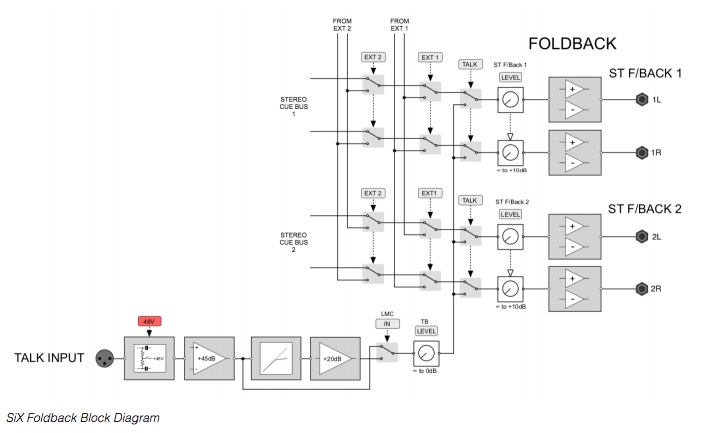Okay this looks ace for small analog summing! I already had an eye on a summing box. Spl mixdream light or the tegeler tube summing mixer. There are also great comparisions on youtube with 4, 8 or 16 stems / tracks summed in the analog domain. Basicly: the more stems / channels you sum the better the sound will get. Just wondering how analog summing vs logic 96khz 64 bit natural phase mode sounds!
my guess is their target market already has decent AD and DA converters they’re happy with, and/or prefer to have these two units be independently upgrade-able. in any case, if they’d put converters into it that matched the quality of the rest of the unit, it’d likely cost $500 or so more.
In the States we dont waste time destroying our culture, from spelling with fancy letters to multiple votes. We just get 'ér done.
Analog summing is interesting. My limited experience tells me the result is very different vs ITB summing. But not always necessarily better sounding. Depends.
Stuff summed in analog sounds way more round and smooth. Stuff summed ITB sounds more “HDR”. Vibey analog gear might benefit from ITB summing while ITB-made content made with softsynths etc might benefit from analog summing, or something along those lines. Guess it depends on what one is looking for.
And at least you need great ad/da converter like ferrofish pulse or something similar.
Am I right in assuming regardless of the creative outcome, mixes will at least be wider?
Not sure you can assume that. You’ll get something different using a summing mixer. Better? Hard to say.
wider, as in stereo image? Not in my experience. However, if you are talking bout the mystical “3D” effect often talked about in audio boards, I suppose that happens to a degree… something about the microdynamics of the sounds are changed in a way that is often perceived as invreased depth in the sounds… Hard to put in words exactly.
But then again, this increase in “3D” depth can also be attained by running audio into tape, tubes etc… I think its an intrinsic quality of certain analog amplifiers/electronics. Like my KT pultec clone also does this  BTW, subpar AD/DA conversion often makes stuff sound less “3D”, I wonder why… maybe something to do with LSB part of the encoding? If these are all related to the same phenomenon, that would point towards low-level dynamic changes…
BTW, subpar AD/DA conversion often makes stuff sound less “3D”, I wonder why… maybe something to do with LSB part of the encoding? If these are all related to the same phenomenon, that would point towards low-level dynamic changes…
Thanks for the additional info, lots of food for thought. I recently watched a somewhat vague YT video on audio summing and the engineer bloke claimed an immediate difference in mix depth and stereo width. Not sure what to think, I guess I will have to try and hear it for myself. Not sure if the end reward will outway the added layer of complication. I don’t need much more analogue warmth tbh!
“Solid state” and “logic” - all words that cannot be used to describe the UK at the moment…
I think its very difficult and sometimes very misleading trying to convey auditory experiences with words. One mans “fat” is another mans “tubby” and “highend sheen” is “excessive sibilance” to some etc… Listening is always best.
I agree with you with regards to those terms you mention , and ‘warmth’ is often perceived differently. but I personally consider spatial dynamics to be very clear cut.
“is the elektronauts forum becoming British these days?” … just kidding 
this thing looks cool though, good job SSL
definitely buying this. question is, what do i sell?
You’ve summed it up beautifully.
I could be wrong but it doesn’t look like that routing will work.
Looking at the circuit diagram in the manual, the cues feed the foldbacks via the channel stereo. cue sends. The circuit is open if none of the buttons in the foldback section are pressed with the cue mix being heard at the foldback. If you select EXT 1 as a source for the foldback, the cue is interrupted. Same for EXT 2 and Talk. These sources also inter-cancel with Talk taking priority over EXT 1 and EXT 1 over EXT 2. So there doesn’t appear to be a route to sum the cues and EXT inputs to the foldbacks
Also there is strangely no way to select the foldbacks as monitor sources, although the cue buses can be monitored in the headphones.
I can only see a way to feed your stereo input mix through channels 1 & 2’s eq & dynamics but NOT to have that processed signal then routable to the master bus comp.
2 x Stereo In - Main Monitor Out
2 x EXT stereo in - Main Monitor Out
Physically patch Main Monitor Out to Channel Inputs 1 & 2. Mute these channels to exclude from the Main Bus and send to Bus B.
Now you can monitor pre and post channel eq & dynamics by switching your monitor sources from Main + EXT 1 + EXT 2 to B Bus only.
Other routing possibilities to take in the master bus comp are frustrated by EXT 1 + EXT 2 not being available to the B Bus. Otherwise you could route all your stereo inputs to the B Bus and patch from there into channels 1 & 2 sending to the master comp and main bus. Then you could have monitored pre processed on the B Bus and post on the main.
I’d be delighted if someone can prove me wrong and suggest a routing that works.
what do you think: Will the price in Euros go up or down after Brexit?
Yes
Sorry, I’ll show myself out…
You could be wrong but your not…
I just looked at the surface and made some generous assumptions about the functionality of those external inputs. My mistake.
If you really must process your mix with both the channel eq/compand master bus comp then you will need 2 passes.
Having said that, it wouldn’t change my decision regarding this mixer. A fixed frequency/fixed Q equalizer is not the best for a mix, and I probably wouldn’t want both the channel and the bus comp in series. The preamp and bus compressor are the selling point for me.
That you you can’t send external inputs to headphones or external effects knida sucks.
That you can’t monitor headphone mixes really sucks if you are ever recording anyone but yourself.
I have no idea.
